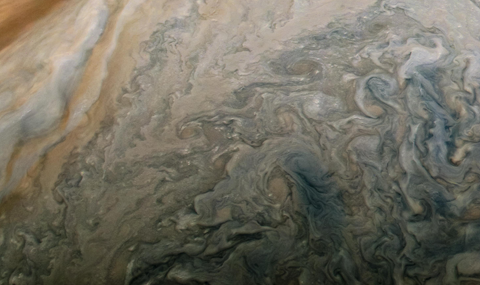During the past few years, the Cassini mission at Saturn and the Juno mission at Jupiter provided measurements with unprecedented accuracy of the gravity and magnetic fields of the two gas giants. Using gravity measurements, it was found that the strong zonal flows observed at the cloud level of the gas giants are likely to extend thousands of kilometers deep into the planetary interior. However, gravity measurements alone, which are, by definition, integrative measures of mass, cannot constrain the exact vertical structure of the flow with high certainty. Taking into account the recent Cassini magnetic field measurements of Saturn and past secular variations of Jupiter’s magnetic field, we obtain an additional physical constraint on the vertical decay profile of the observed zonal flows on these planets. Our combined gravity-magnetic analysis reveals that the cloud-level winds on Saturn (Jupiter) extend with very little decay, i.e., barotropically, down to a depth of around 7,000 km (2,000 km) and then decay rapidly in the semiconducting region, so that within the next 1,000 km (600 km) their value reduces to about 1% of that at the cloud-level. These results indicate that there is no significant mechanism acting to decay the flow in the outer neutral region and that the interaction with the magnetic field in the semiconducting region might play a central role in the decay of the flows.

The three measurements used in this study to calculate the Saturnian flow structure. The cloudlevel wind (García-Melendo et al. 2011) adjusted with the recently estimated rotation period of 10h 34m (Helled et al. 2015; Mankovich et al. 2019) (black) and a range of winds calculated for rotation periods between 10h 32m (Read et al. 2009) and 10h 39m (Smith et al. 1982) (white shading). The residual gravity field at the planet’s surface RS (blue) based on the dynamical contribution to gravity harmonics J3 and J5 to J10 (Iess et al. 2019; Galanti et al. 2019). The residual radial magnetic field at 0.875RS (red) based on the measured Gauss coefficients g 0 4 to g 0 11 (Dougherty et al. 2018; Cao et al. 2020). Measurements are shown on top of a Saturn picture taken during the Cassini mission (NASA/JPL-Caltech).


